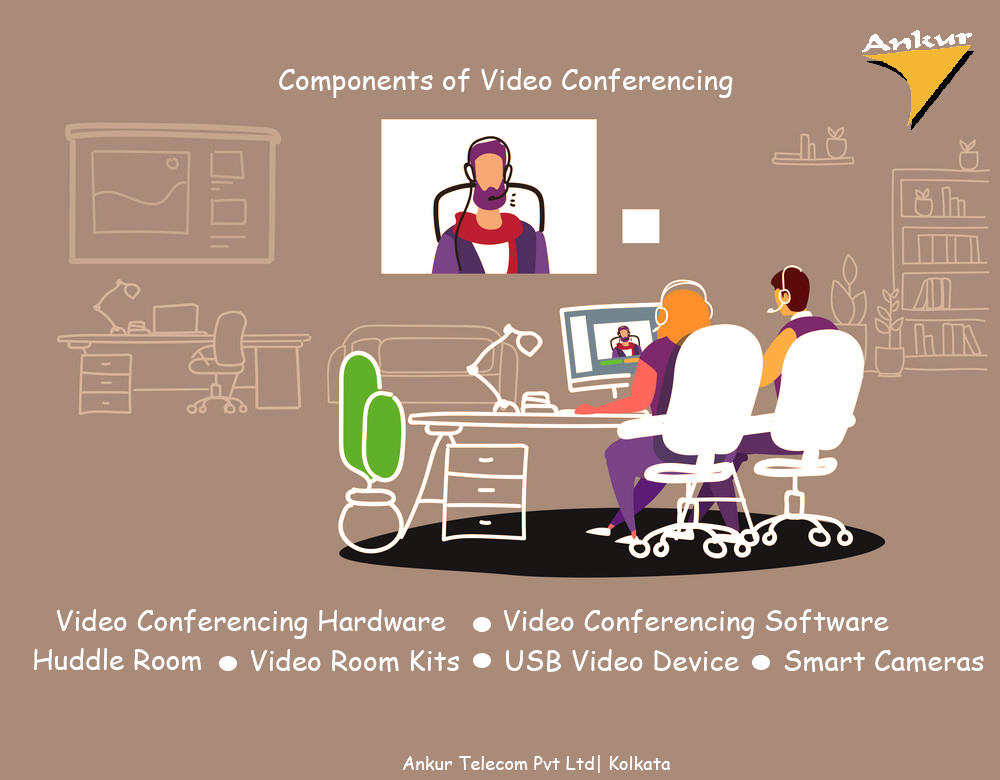Understanding Video Conferencing Components
Earlier video conferencing was a way to connect two conference rooms in the same building. Video conferencing components had limited capabilities. In addition, Integration and Collaboration was a challenge because devices and software from different vendors often didn’t work with each other. Video conferencing has matured, and most organizations use video as part of their unified communications strategy.
Video conferencing is no longer relegated to use in the boardroom only. The number of vendors offering video conferencing components has increased, giving organizations more choice in selecting the best video options for their businesses.
Components of a video conferencing system
Video conferencing hardware- Hardware refers to the physical components of video conferencing, such as cameras, microphones and speakers. Hardware has evolved from simple but expensive options aimed solely at large conference rooms to more mature offerings for smaller meeting spaces. Cameras now have more capabilities with a lower price point, giving organizations more options when it comes to the hardware that best suits their needs.
Video conferencing software- Software controls the video meeting experience by enabling users to make calls and, sometimes, providing additional capabilities, such as chat and file sharing. As the demands for video conferencing have evolved, the number of vendors offering video conferencing software has risen. Video conferencing software may be offered as a stand-alone product, or it may be built directly into video hardware.
Early on, interoperability between new video software offerings and legacy hardware was a challenge. Now, vendors are beginning to partner to bring customers offerings that blend hardware and software into a single integrated option.
Huddle rooms- Huddle rooms are small rooms intended for use by two to six people. Unlike larger boardrooms meant to disseminate information to large groups, huddle rooms are intended as a space for small groups to collaborate and get work done. Organizations have started adding video conferencing capabilities to theses spaces as employees increasingly need video to collaborate effectively. Because of their size, huddle rooms have different video conferencing needs than a traditional conference room, such as different microphone sensitivity and camera framing.
Video room kits- Kits are often intended for smaller spaces, such as huddle rooms. The components included in a video room kit vary from vendor to vendor but usually include a camera, speaker and microphone in an all-in-one piece of equipment. Video room kits also eliminate potential interoperability issues by providing all the necessary hardware and software.
USB video devices- To handle hardware and software interoperability issues, some vendors offer USB-driven video devices to provide universal compatibility with video software. The device connects to any laptop or control hub using a USB port. Organizations using different video services can benefit from the universal compatibility offered by USB video devices.
Smart cameras- Smart cameras are video cameras with AI capabilities. Unlike traditional video cameras that need to be positioned and operated to change the field of view, the AI in smart cameras can automatically zoom in or out to track active speakers. Some smart cameras can also blur backgrounds, identify objects and count the number of people in a room.
Source: https://searchunifiedcommunications.techtarget.com/




